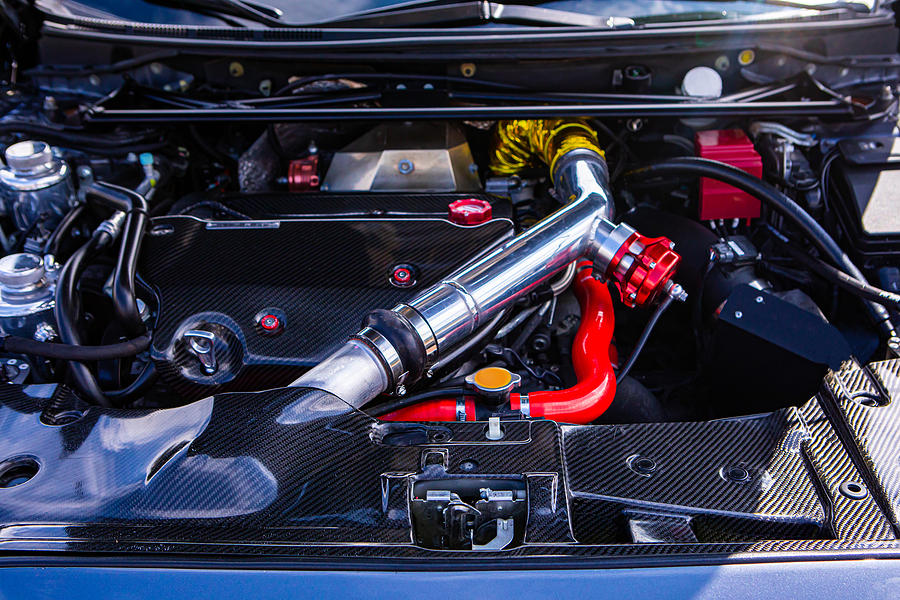Dynamics of Engine Break-In Before Running Engine Dyno Testing

To prepare for break-in, a new-build engine must go through a series of operations before it can be set up on the engine dyno. Break-in is the essential period of an engine’s life, and we take great care to ensure that it is completed correctly. We will continuously monitor your engine temperature, oil pressure, exhaust gas temperature, and air-fuel ratio throughout this process to ensure that your engine is protected.
1. Engine Transportation
Before bringing the engine into our facility, make sure to fill the cooling system with coolant. Read the section in this post titled “Prepare the engine for transportation” for additional information.
2. Inspection
We will put your engine on the dyno and thoroughly inspect it, including the headers, alternator, water pump, and other components, to ensure that nothing has come loose during shipment and to check for leaks.
3. Lubricant
Following that, we’ll fill the engine with break-in oil. Joe Gibbs BR30 Break-In Oil is highly recommended by us. Bring extra oil for the initial fill-up as well as one change (don’t forget to bring the filters, too). Alternatively, if you prefer that we provide the oil, please let us know in advance. Once the break-in oil has been applied, we will prime the engine until the oil level reaches the level of the rocker arms and then stop.
4. Starting the Engine
To begin, we’ll remove the spark plugs and turn off the fuel system before starting the engine and running it until the oil pressure is up and the carburetor is primed. The plugs are then reinstalled, and the fuel system is turned on. Following that, we dial into the correct timing mark while slightly delaying it to avoid the possibility of knocking the timing.
5. Warm-up
Throughout the entire warm-up procedure, we’ll keep an eye out for any oil or coolant leaks. If any leaks are discovered, we will pause the warm-up and repair them before continuing with the exercise.
If the engine has been supplied with new flat tappet hydraulic cams, we will run the engine at speed between 2,000 and 2,500 rpm for 30 minutes with no load to ensure adequate cam lobe break-in is accomplished. Alternatively, if new camshafts have not been installed, or if the engine is equipped with roller cams, we will run the engine at high idle until the cooling fan is activated by the engine.
6. Seating the Rings
With the dyno replicating normal driving circumstances on a flat road, we accelerate to 4,500 rpm with mild throttle and immediately convert to full engine breaking before allowing the engine speed to return to 2,000 pm. Is it necessary to repeat this procedure/process? a total of ten occasions
Following that, we repeat the technique for 10-15 cycles, but this time we rev the engine to 5,500 rpm. For the last break-in pulls, we’ll start with modest throttle and work our way up to five full-throttle cycles, allowing the internal engine temperature to normalize in between each cycle.
7. Finishing
We replace the oil filter and drain and re-fill the engine with fresh break-in oil after the filter has been changed.
The final stage in the technique is to make any necessary adjustments to the valve lash.
8. Tuning
The tuning break-in process has now been completed. The engine is now ready for tuning, as well as the installation and testing of performance equipment if that is what you want to do. In the tuning pulls, we’ll push the engine hard to provide the pressure necessary to further seat the piston rings and achieve consistent wear throughout the engine. Following the final draw, we’ll change the oil and filter once more and ready your engine for shipping.
Factors to Bear In Mind:
Even if you want to use synthetic oil, we recommend that you let your engine run on standard mineral engine oil for the first plus or minus 3,700 miles before switching to synthetic oil to avoid premature wear. The rings may not be correctly set if this is not done. Consequently, in addition to the break-in oil, you’ll need to bring along a conventional mineral engine oil and filter for the third (and final) oil change.
To prepare for break-in, a new-build engine must go through a series of operations before it can be set up on the engine dyno. Break-in is the essential period of an engine’s life, and we take great care to ensure that it is completed correctly. We will continuously monitor your engine temperature, oil pressure, exhaust gas temperature, and air-fuel ratio throughout this process to ensure that your engine is protected.
